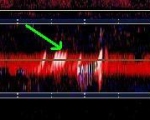 FROM BRAINWAVES: Since its introduction in 1982, transcranial doppler ultrasound (TCD) has evolved into a portable, multimodality, noninvasive method for real-time imaging of intracranial vasculature. The detection of cerebral microemboli is among the more remarkable capabilities of TCD. Emboli create countable signals in the ultrasound display due to the higher reflection of sound waves compared to the blood cells. Experimental models have shown a high sensitivity and specificity for detection of a variety of substrates, including thrombotic, platelet and atheromatous emboli.
FROM BRAINWAVES: Since its introduction in 1982, transcranial doppler ultrasound (TCD) has evolved into a portable, multimodality, noninvasive method for real-time imaging of intracranial vasculature. The detection of cerebral microemboli is among the more remarkable capabilities of TCD. Emboli create countable signals in the ultrasound display due to the higher reflection of sound waves compared to the blood cells. Experimental models have shown a high sensitivity and specificity for detection of a variety of substrates, including thrombotic, platelet and atheromatous emboli.
Microembolic signals (MES) within the intracranial vasculature are most frequently identified in patients with large-vessel atherosclerotic disease, such as carotid stenosis. They have also been reported in intracranial arterial stenosis, arterial dissection, cardiac disease and atheroaortic plaque. Additionally, they have been seen in arteries distal to coiled aneurysms.
There is strong evidence that MES detection predicts future ipsilateral stroke risk in patients with symptomatic carotid stenosis (Markus HS, et al.; King A, et al.). A recent study of patients with asymptomatic carotid stenosis demonstrated that MES predicted subsequent ipsilateral stroke and TIA, and also ipsilateral stroke alone, and that it is helpful in selecting patients who will benefit from carotid endarterectomy.
Identification of active embolization provides crucial pathophysiological information to the neurologist and can also aid in the selection of tailored therapy aimed at reducing the risk of stroke. Emboli from different sources have unique compositions and require specific therapy, such as antiplatelet agents for emboli from large artery atherosclerotic plaque and anticoagulants for cardiac emboli.
Future advances in TCD technology will permit full automation and better identification of the composition and size of circulating embolic materials, thus improving its value for patients with cerebrovascular disease.
For more information about TCD for detection of cerebral microemboli, contact Colleen Douville at colleen.douville@swedish.org or 206-320-4080.























